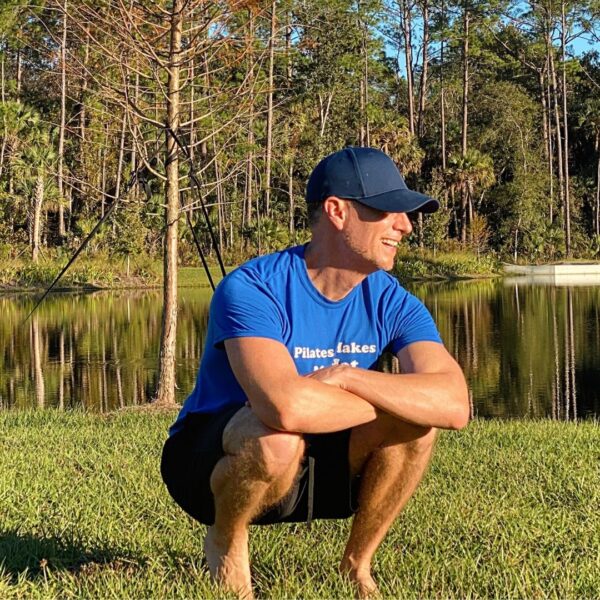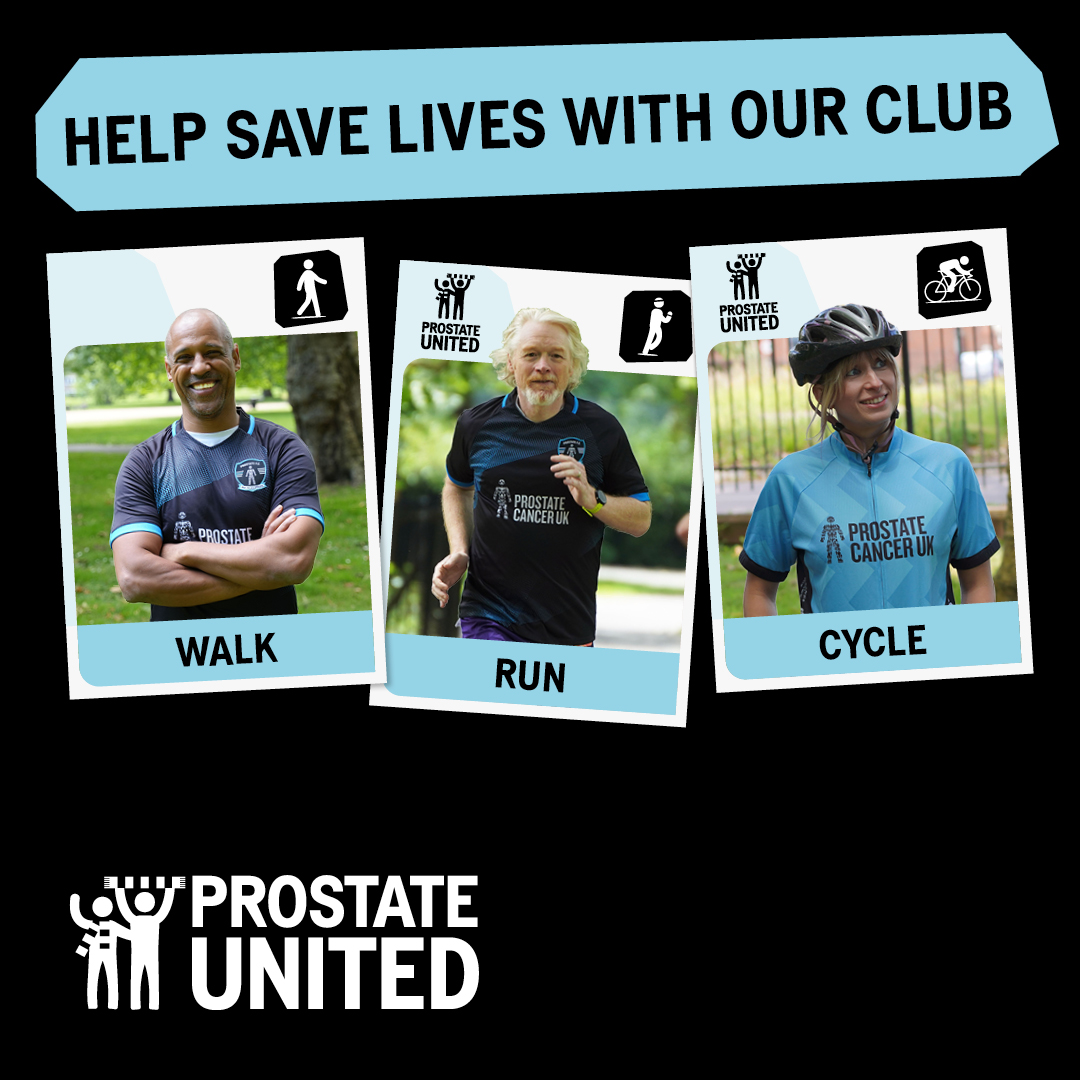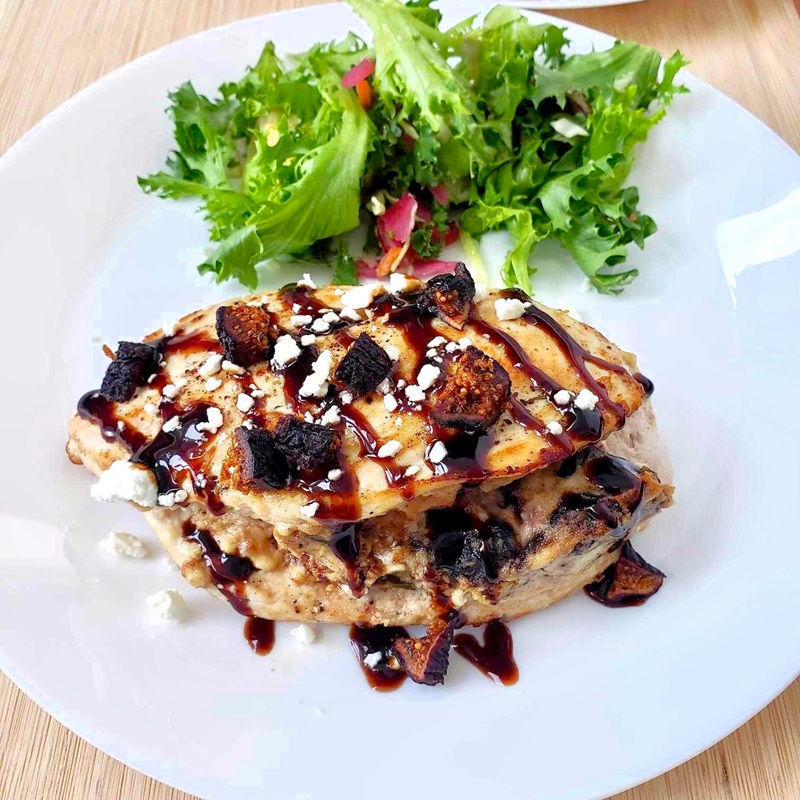Diet and Nutrition
Why Athletes Need Pilates Mat Training
One of our favorite fitness experts is Sean Vigue (remember the awesome workouts he’s done for us?). And, guess what?! He has a new book out!
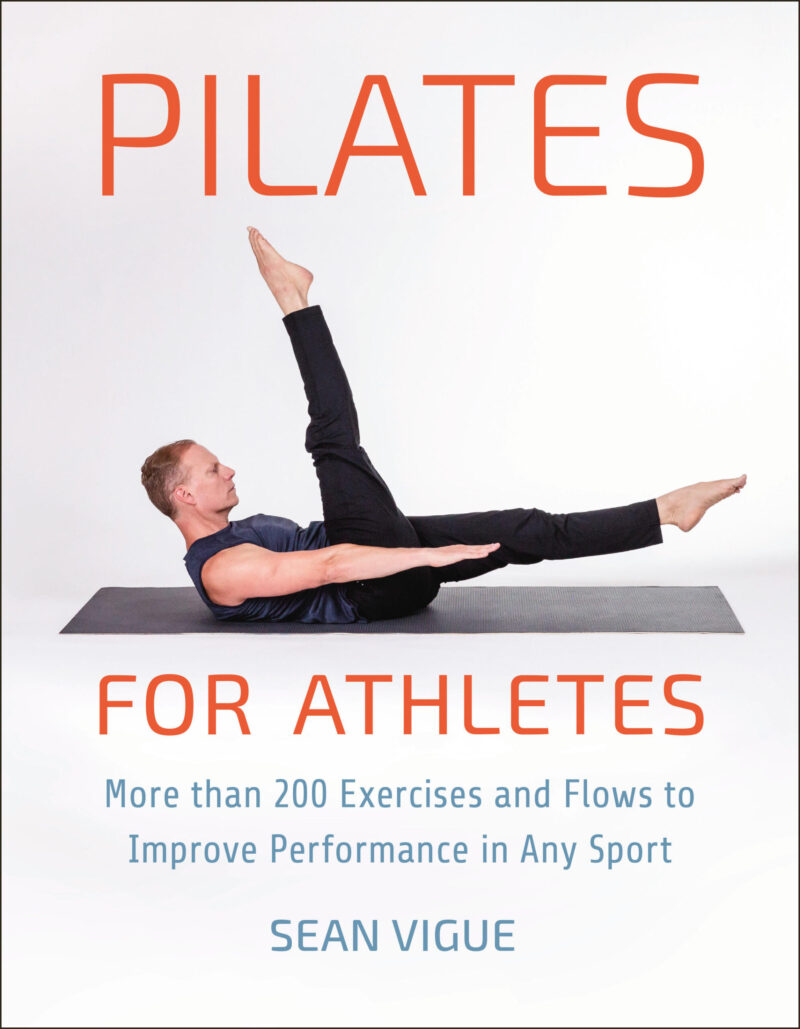
Pilates for Athletes helps everyday people (no matter their sport or activity they love to do) reach their highest physical and mental levels and improve their conditioning, control, endurance, and more — all through Pilates.
Sean Vigue has taught thousands of classes around the world and has appeared in more than 2,000 health and fitness videos. He’s positive, he knows his stuff, and his workouts are FUN. Basically, he’s the best!
And, we’re super pumped that he’s letting us share an excerpt from his new book. Read on for the top 10 reasons why athletes should add Pilates into their training.
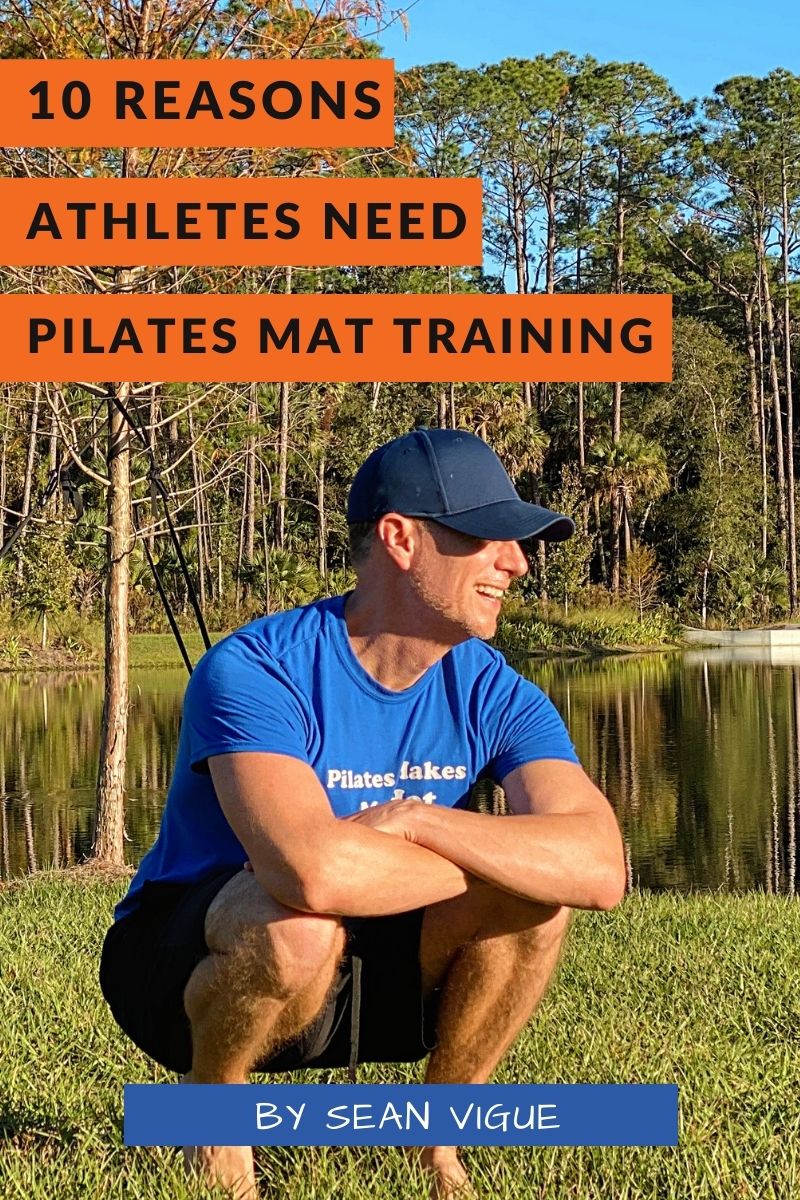
Top 10 Reasons Why Athletes Need Pilates Mat Training
By Sean Vigue
Pilates mat training is a bodyweight-only, total body conditioning program which features an exhaustive list of core centered exercises, sequenced together to elevate your mind, body, spirit and athletic ability. Only a Pilates (or yoga) mat is needed to participate. No weights. No machines. Just you and the mat.
Strictly speaking, there are not many workout programs that can deliver to an athlete the vast amount of benefits that Pilates mat can. It is a lifelong program for the well-rounded athlete to practice, absorb and enjoy. The benefits are almost too exhausting to list, and there is no end to the ways Pilates elevates your health, fitness, movement, speed, strength, control, balance, endurance, breath control, focus, power and flexibility.
That said, here are 10 of the top reasons why athletes need Pilates Mat Training.
1. Pilates constructs a strong, durable, flexible and balanced core.
Joseph Pilates referred to the core as your “powerhouse” and “girdle of strength”. It is the center and support of your body. The core is the structural foundation that connects the rest of the body together and develops stability, strength, and control. It begins at the base of the pelvic floor and runs upward to the bottom of the diaphragm, and consists of your abdominals, low back and glutes. Technically speaking, the core is made up of the rectus abdominis (the muscle people mean when they think “abs”), transverse abdominis (the deepest of the abdominal muscles which wraps around your sides and spine), erector spinae (a pair of muscles in your lower back), the internal and external obliques (the muscles located on the sides of your abdomen) and the glutes/bottom/butt (the gluteus maximus, medius, and minimus).
A weak core leaves the athlete open to injuries, compromised endurance and becoming easily fatigued from failing posture. Pilates core exercises train the muscles in your pelvis, lower back, hips, glutes and abdomen to work together, leading to improved balance, stability and body control. Every sport from basketball to tennis to throwing darts depends on force radiating from your center (core) outwards into the limbs.
2. Pilates builds a strong, balanced and resilient body.
Athletes of all ages and fitness levels have been incorporating Pilates into their training for improved overall strength, balance and resistance to injury. This is because it is difficult to find a more comprehensive and effective program than a regular Pilates mat practice. Pilates helps athletes improve their everchanging movement patterns with progressive destabilization, meaning the further you journey into your workouts, the more the exercises will work to challenge and force your body to adapt and improve. Once your body adapts you acquire a higher level of skill.
Each exercise is equally balanced on both sides of the body to counteract the imbalances seen in sports such as tennis, golf or baseball, where the dominant side is favored and strengthened while the other side weakens and atrophies. Pilates works to fix muscular imbalances and bring symmetry to the body, bringing with it optimal physical achievement.
3. Pilates improves mobility and ease of movement.
Pilates exercises emphasize healthy, flowing and correct movement. Is your body mobile? How capable are you of moving your body quickly without strain? Are you able to move freely through the day without tightness and discomfort in your body? How well do you move as an athlete? Is your mobility helping or hurting your athletic skill?
How well you move your body through multiple planes of movement determines your athletic success. Pilates training moves your body through every angle and plane of movement while focusing on building strength and flexibility in your core. Having a body which can easily adapt to the unpredictable demands of a sport—quick changes of direction in tennis, explosive speed in hockey, driving to the basket in basketball — will give you a huge edge over your opponents and prolong your career.
4. Pilates improves overall flexibility.
Joseph Pilates once said, “True flexibility can be achieved only when all muscles are uniformly developed.” For this reason, Pilates doesn’t increase flexibility (defined as the range of motion in a joint or group of joints and moving them through a full range of motion) just based on the popular “hot spots” of the body, such as the hamstrings and low back. Rather, Pilates works through constant flows and movements which stretch, lengthen and expand the whole body.
Where many workouts isolate muscles and compress the body and spine, Pilates does just the opposite: every Pilates exercise is designed to lengthen and expand your body through a myriad of flows and angles. It is flowing, dynamic movement which stretches and strengthens the muscles simultaneously. You will smoothly and gracefully flow from one threshold to the next, moving your body with precision and control through as full a range of motion as possible.
5. Pilates is a great tool for rehabbing your body during injury and fixing problems associated with muscular imbalance.
Pilates mat practice is low impact on the joints, making it the ideal exercise when rehabbing your body and recovering from an injury. You can also structure your Pilates workouts to your individual needs — there is no one-size-fits-all approach to Pilates. You are in control of your training, not the exercises. They exist to serve you and your specific physical, mental and conditioning needs.
6. Pilates mat only uses your bodyweight, so you can train anywhere and anytime.
Efficient and easily adaptable to your current training program, Pilates can fit into the busiest of schedules. No weights, equipment or machines of any kind means you can rely exclusively on the greatest gym you will ever have: your body.
Your workouts can last from 10 to 60 minutes depending on how much strength, flexibility and focus you need at that moment, and you can train every day, mixing up your workouts so you are consistently hitting new areas.
7. Pilates provides an everchanging, never-ending supply of exercises and sequences to keep you constantly challenged.
Athletes needs to be challenged to force their bodies to adapt and improve. Pilates training is a journey of progressive destabilization with every workout. The exercises become more challenging and integrative as you progress, and with each new exercise, you integrate new parts of your body into the movements. Once the exercise becomes too “easy”, we add a movement which forces your body to adapt and improve in real time. No matter what the athlete needs, Pilates can supply it.
8. Pilates builds and reinforces proper posture and alignment.
Having proper body alignment — how the head, shoulders, spine, hips, knees and ankles relate and line up with each other — improves your posture and reduces the stress and strain on the spine. Standing, sitting and moving with proper postural alignment will decrease strain on your muscles and ligaments and increase your ability to flow with more efficiency and precision. For athletes, the foundation of control begins with good posture. From this foundation comes the big movements such as jumping, tackling, swinging, throwing, catching and sprinting … but if your body is not aligned correctly, these movements will be compromised and weak.
Good posture, working in tandem with a strong core, helps stabilize the body and support the athlete’s need for speed, power, rotational force and quick changes of direction. Pilates will help reinforce good posture and alignment during every phase of your sport.
9. Pilates improves your ability to breathe.
Too often, we breathe in a shallow method, draining our energy and focus and crippling our posture. Deep Pilates breathing strengthens the core and lifts our bodies into a strong, aligned posture.
Pilates teaches deep lateral thoracic breathing, which draws the breath upward out of the low belly and bring it into the sides and the low back. This style of breathing drenches the lungs and muscles in oxygen and increases your ability to bring in and process the breath with efficiency. It helps you take advantage of every breath cycle, drawing fresh oxygen into the lungs and squeezing every atom of breath out, filling and emptying the lungs with every breath.
Improving your ability to breathe will drastically increase your athletic performance and abilities. Effective breathing requires thoracic mobility, core strength and a pliable diaphragm for pumping the breath in and out of the lungs. An athlete who is utilizing their full breathing potential will experience increased energy, more blood flow, sharper focus, and improvement when facing stressful and unpredictable situations. Pilates also teaches the athlete how to breathe into the movement, which helps the exercises flow smoother through the full range of motion and with more control. Deeper breathing and increased awareness of the breath translates into better form and power with swings, jumps, sprints, changes of directions and throws. Connect your breath with movement and decrease the wear and tear while elevating your ability to move — a win-win-win.
10. Pilates increase your explosive speed and power.
The Pilates combo of deep, expanded breathing, a stronger core, improved flexibility in the entire body, increased strength and efficient movement combine to create a body which can move quicker, faster and with more force behind it. It’s pretty straightforward: the looser and more in control you are of your body, the faster your speed and more functional your strength.
Whether it means moving quicker with more precision when rolling out for a football pass, maneuvering around the defense en route to the goal in hockey, or planting, jumping and spiking the ball in volleyball with explosive power, Pilates provides the tools to do it.
Bottom line: the benefits of Pilates are powerful and transcend all sports. Every breath you take and every move you make enhances your physical and mental performance, combining to create a deep-rooted love of bettering yourself each and every day. In this, Pilates is a constant and dedicated companion. Try it!
Excerpted from Pilates for Athletes with permission from Hatherleigh Press.
A huge thanks to Sean for letting us share this gem of an excerpt! Be sure to pick up his latest book here! —Jenn
More Awesome Posts by Sean Vigue
Related Posts
- Why Athletes Want Pilates Mat Coaching
One among our favourite health consultants is Sean Vigue (keep in mind the superior exercises…
- Do a Pilates Leg Kick
Searching for a strategy to strengthen your again, tighten your glutes, and agency up your…
- What to Put on to a Pilates Exercise
Questioning what to put on to a Pilates exercise for max consolation, efficiency, and magnificence? The hot…

